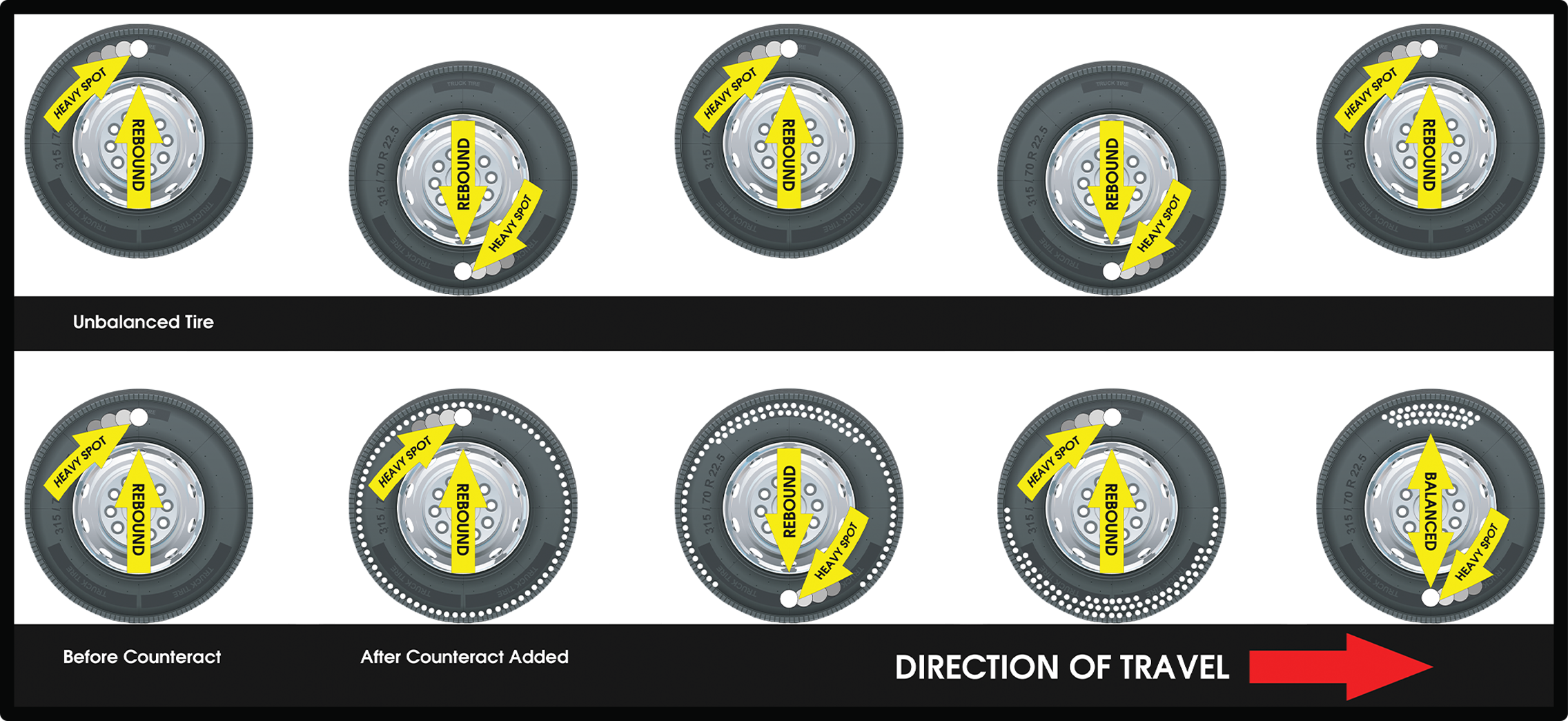The science behind balancing beads can be broken down into stages listed below, with three forces influencing the process: gravity, centrifugal force, and inertia.
Tire at Rest
The beads pool at the bottom of the tire due to gravity.
Tire in Motion
The beads evenly distribute themselves around the inner liner of the tire and are held in place by centrifugal force. The size of the tire affects the centrifugal force applied to the beads. If the vehicle is traveling at 30 mph, a smaller tire would exert more centrifugal force than larger ones. Assuming the tire is balanced, the beads would remain in this state with only centrifugal force and gravity acting on them.
Heavy Spot on Tire
A vehicle’s suspension allows the wheel assembly to move vertically, where upward motion on the assembly is resisted by the spring, while the downward motion is resisted by the tires (sidewall flex and PSI), as well as the suspension. As the tire rotates at higher velocities, centrifugal force applied to the heavy spot increases to the stage where it can actually cause the tire to hop, especially when the tire oscillation (up and down movement per rotation) matches the natural rebound frequency of the suspension, creating an amplified effect on the range of vertical motion of the wheel assembly. The beads inside the tire are their own mass resisting motion, which means they do not act in the same manner as the tire does during this stage.
 Beads affect different segments of the tire while the tire moves up.
Beads affect different segments of the tire while the tire moves up.
Top section of tire: As the heavy spot causes the tire to move up, the beads do not move up with the tire. They lose contact with the tire liner momentarily until they’re established with the tire liner further away from the heavy spot (inertia).
Bottom section of tire: As the tire moves, beads remain in contact with the tire liner and do not change their location in relation to the tire.
3 and 9 sections of tires: As the tire moves up, the beads shift further away from the heavy spot.
Reducing Vibration: This above process repeats itself on every tire rotation, progressively moving the beads away from the tire’s heavy spot. In return, the tire’s oscillations become reduced with every rotation until the tire is balanced.
No Tire Vibration: The tire is now balanced, and the only acting forces on the beads are centrifugal force and gravity.
Repeat: This process is repeated every time a new imbalance occurs in the tire.
Notes: Imbalanced tires create an increased amount of sidewall flex on the tire, causing the tires to heat up beyond their operating capabilities. This, in return, expedites tire wear, as the rubber is more malleable, but can also assist in tire failures, tread separation, and the tire casing’s retread ability.
Check out the web page below for more details:
HOW COUNTERACT BALANCING BEADS WORK



